#hamadan province
Explore tagged Tumblr posts
Photo
This solid gold ornament is in the form of a roundel with two projecting elements that have slots for the attachment of a strap. The rim of the roundel, consisting of eighteen thumbnail-shaped cells for turquoise inlay in the manner of some Sarmatian roundels, frames the openwork figure of an eagle in high relief. Grasping a small, crouching animal in its talons, the bird perches in three-quarter view, facing right, with its chest extended and the rest of its body receding into the background. Its wings are outspread, the one on the left seen emerging from behind the swelling of the chest and the one on the right receding into the back plane. The body and legs carry ridges and linear patterning to suggest the texture of feathers. The bird's head is in profile, with a cell for the prominent ear, a protrusion at the eye area, a curved beak, and a downcurved line for the mouth. The entire figure is worked in the round, although the back is distorted and not as carefully finished as the front.
The eagle's prey has been variously identified as an antelope, a goat, and a hare. Turquoise is inlaid in its large ear and in several places on its body. The tabs on either side of the roundel have cells for inlays at the corners in the form of debased acanthus leaves.
This piece is one of a pair; its mate, in the British Museum, London, depicts an eagle facing the opposite way. It was thought by Ernst Herzfeld to be part of a treasure found in 1910–11 in a chamber tomb near Nihavend in Iran. Herzfeld speculated that this trove had belonged to an aristocratic Parthian family and had originally included a group of Roman gold coins of the first to second century A.D. that surfaced independently in modern times. Another related piece of jewelry, found in excavations at Dalverzin Tepe in Uzbekistan, can be dated archaeologically to the first century A.D.
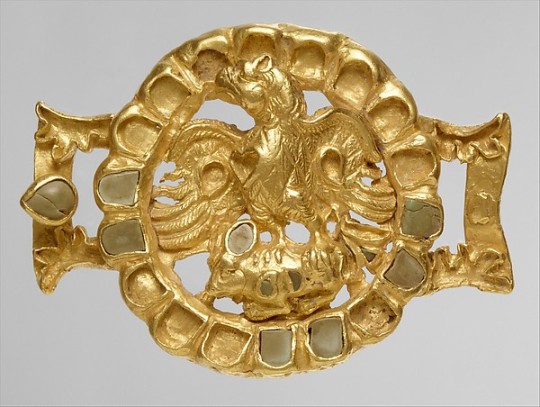
Gold and turquoise clasp depicting an eagle and prey. The piece is from Parthia (modern-day Iran) and dates to the 1st or 2nd century CE. From the collection of the Metropolitan Museum of art.
#history#jewellery#clothing#parthia#samartians#iran#uzbekistan#hamadan province#surxondaryo region#nahavand#dalverzin tepe#ernst herzfeld#turquoise#belts
25 notes
·
View notes
Text

Young Jewish men from the Hamadan Province, Iranian Kurdistan (Rojhilat), ca. 1900
118 notes
·
View notes
Text
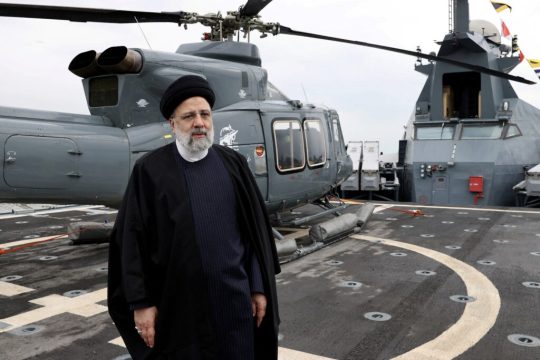
Ebrahim Raisi
Ruthless prosecutor linked to thousands of executions who rose through the theocratic ranks to become the president of Iran
The career of Iran’s president, Ebrahim Raisi, who has been killed in a helicopter crash aged 63, was defined by violent events. His initiation into politics was triggered by the 1979 Iranian revolution, one of the most cataclysmic and epoch-shaping events of the late 20th century, which unfolded with headline-grabbing drama as Raisi was just turning 18.
Given the heady fervour of that revolutionary period, with daily mass street demonstrations eventually leading to the toppling of Shah Mohammad Reza Pahlavi, the country’s once seemingly invincible western-allied monarch, followed by the return from exile of the messianic cleric Ayatollah Ruhollah Khomeini to ecstatic acclaim, it is perhaps no surprise that a militant, impressionable young activist was sucked into the political system that took shape in the aftermath, was moulded by it - and later participated in some of its more unsavoury actions.
With the theocratic Islamic regime in its infancy, tottering in the face of often violent internal opposition and military attack from Saddam Hussein’s Iraq, which invaded Iran in September 1980, the young Raisi cut his political teeth in the fledgling system’s judiciary, administering revolutionary justice to political opponents.
He apparently did so with precocious aplomb and a ruthlessness that some say bordered on cruelty. In 1981, aged only 20, he was appointed prosecutor of Karaj, a large town near Tehran; within four months, he was combining that role with prosecutor of Hamadan province, more than 300km away. Political executions during this period were commonplace, although the young Raisi’s direct role in those were unclear.
By 1985, his ideological commitment and judicial zeal earned him a significant promotion to the post of deputy prosecutor of Tehran, Iran’s sprawling capital. He was now well and truly part of the newly formed establishment, so much so that he eventually came to the direct attention of Khomeini, by now undisputed leader of the revolution, who reportedly gave him extrajudicial responsibilities.
It was this relationship that led to a baleful episode that cast an enduring shadow over Raisi’s career and which, critics say, should be the legacy for which he should be remembered.
In 1988, he was among at least four judicial and intelligence ministry-linked figures later revealed to have been members of a shadowy “death committee” established on Khomeini’s orders to oversee the execution of thousands of political prisoners.
According to varying estimates, between 1,700 and 4,400 prisoners – mostly members of the dissident Mojahedin-e Khalq (MEK), but also leftists, and many of them reportedly in their teens – were summarily put to death. Amnesty International said many had been subject to torture and inhumane treatment. To this day, the executions represent arguably the worst violation of human rights in the 45-year history of the Islamic Republic.
A surviving political prisoner, Iraj Mesdaghi – a writer and activist now exiled in Sweden – recalls seeing Raisi, dressed in plain clothes rather than clerical robes, arriving at Gohardasht prison in Karaj for the purpose of making sure executions were carried out and personally witnessing them. One photograph of Raisi from the period depicts a very different persona from the austere, turbaned figure of his presidential years.
How Raisi acquired such pitiless zeal is open to question. Born into a clerical family, near the religious shrine city of Mashhad, he had begun seminary studies in Qom – seat of Iran’s Shia Islamic establishment – at the age of 15, studying at the Ayatollah Borujerdi school at a time when the city began to be plunged into a state of pre-revolutionary ferment, with cassettes of the exiled Khomeini’s sermons being distributed among devout opponents to the shah’s rule.
Whatever the antecedents, there can be no doubt that Raisi’s commitment to Khomeini’s puritanical vision of Velayat-e-Faqih (rule by Islamic jurisprudence) was unambiguous and lasting.
Under Ayatollah Ali Khamenei, who succeeded Khomeini as supreme leader after the latter’s death in 1989, Raisi ascended to a series of senior judicial positions that kept him close to the heart of the theocracy, including the role of special clerical court prosecutor from 2012 until 2021 and head of the judiciary. During his two years in the latter post, he oversaw more than 400 executions, according to the Norway-based Iran Human Rights organisation.
At the same time, as the regime under Khamenei – who has the last word on all state matters – turned its face against liberalising reform, Raisi’s political stock rose. With the supreme leader’s apparent approval, he stood in the 2017 presidential election as a conservative candidate but was beaten soundly by the incumbent, Hassan Rouhani, a centrist who had taken on the mantle of a reformist in a climate that had become steadily more intolerant of a loosening of Islamic strictures on social behaviour.
In 2021, once more with Khamenei’s backing, Raisi tried again and this time prevailed, on a historically low turnout of 48.8% and with 3.7m ballots not counted – either because they were deliberately left blank or voters had written in protest choices, in anger over the mass disqualification of other candidates.
As a president he seemed a markedly greyer figure than previous incumbents, such as the populist Mahmoud Ahmadinejad, or Mohammad Khatami, the popular cleric who had become a champion of reformism by trying to relax the social impact of Iran’s rigid religious rules.
But the political – and contrasting – effect of having Raisi in office became clear in September 2022 following the mass protests triggered by the death in custody of Mahsa Amini, a young Kurdish woman who had been arrested for alleged improper observance of Islamic hijab. Her death spawned a wave of rebellion and the launch of a self-styled movement calling itself “Woman, Life, Freedom”, with women openly flouting strict rules on wearing head covering.
In response, Raisi presided over a brutal clampdown resulting in the deaths, so far, of at least 500 protesters. Repression in the Islamic Republic was not new, but critics detected in the severity of the response an ideological zeal greater even than the crackdown on the 2009 protests that had greeted Ahmadinejad’s disputed re-election.
Raisi’s reward for such orthodoxy was to be spoken of as a possible supreme leader-in-waiting, in succession to Khamenei, who is 85. The abrupt ending to his life in a downed presidential helicopter terminates a controversial political career and renders such speculation moot.
Raisi is survived by his wife, Jamileh Alamolhoda, a writer and scholar, whom he married in 1983, and their two daughters.
🔔 Ebrahim Raisi, politician, born 14 December 1960; died 19 May 2024
Daily inspiration. Discover more photos at Just for Books…?
12 notes
·
View notes
Text
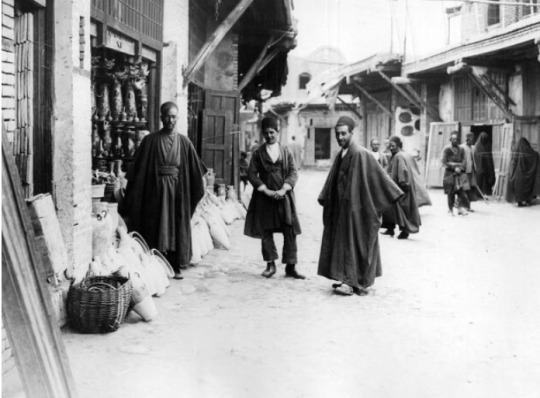
“A potters shop in Hamadan, capital city of Hamadan Province of Iran. Circa 1926”
16 notes
·
View notes
Text
The temple for the deity of fertility:Anahita
Below: The UNESCO-registered Takht-e Soleyman, which was once a prime fire temple of the Zoroastrian faith in ancient Persia, seeks to develop tourism infrastructure, a local official said on Tuesday.
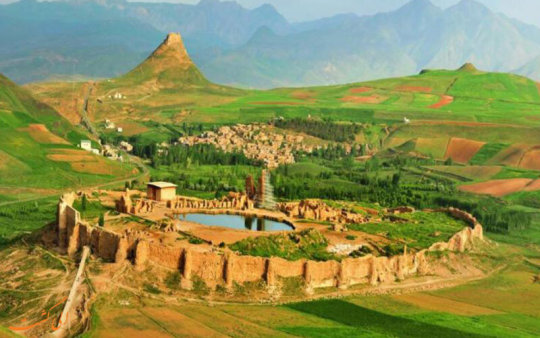
The remains at Kangavar, which is the subject of the present story, are jam-packed with genuine Persian architectural designs. For instance, the plinth's enormous dimensions, which are just over 200 meters on each side, and its megalithic foundations, which are reminiscent of Achaemenid stone platforms.
The ruined temple, which is one of the most glorious stone buildings after Persepolis in the country, has been constructed on a natural hill by using the platform method.
Three historical eras —Achaemenid, Parthian, and Sassanid— have been credited with building the temple. Some theories connected the building to Khosrow II's unfinished palace from the late Sassanid period.
The temple’s structure has a four-square layout, with each side resembling a platform. It was built using the dry stone method, which involves placing building materials directly on top of one another without the use of mortar. It was also plastered with carved stones used to decorate the exterior facade.
In addition to a one-way stairway that provides access to the building in the northeastern part of the structure, the entrances are built into two-way stairways in the building's southern portion.
Inside and outside of the temple, a space is created by a line of parallel columns. The expansive outdoor space is also surrounded by stone columns.
The ratio of the height of columns to their diameter is three to one, which differentiates Anahita temple from all the temples across the world.
The Anahita Temple is said to stand out from all other temples because of its three-to-one ratio of column height to diameter.
Stone ditches have regulated the river water and magnificently channeled it to the temple's central pond. Additionally, one of the engineering marvels of that time was the type of water stream in the temple.
A roughly quadrilateral-shaped, substantial platform made of large, unworked rubble stones, smaller stones, and gypsum mortar frames the Kangavar natural hill. The platform's outer walls are 18 m thick, and its west and south sides each measure 224 and 209 meters, respectively.
According to Iranica, up to the first half of the 20th century, scholars pleaded for an ideal reconstruction of a columned temple on the “Greek” ground plan standing on a high platform or terrace with a monumental staircase on the south side of the terrace.
This temple has been dated to the 2nd or 1st century CE. During the 19th century and the beginning of the 20th century, the ruins were the object of vast devastation as the site was used as a quarry to get building materials for the expanding settlement of modern Kangavar.
Since 1968, Iranian archaeologists have been excavating the site in an effort to preserve it and learn more specifically about the ruins.
The ancient Iranian deity Anahita is thought to have been associated with two archaeological sites in the country. The larger and better-known of the two is situated in Kermanshah province’s Kangavar. The other one is in Bishapur of Fars province.
Below:Ancient Artifact depicting Anahita:

Kangavar can be reached via a modern road from Hamadan to Kermanshah. It is located at a distance of about 75 km from Hamadan and 96 km from Kermanshah.
Original source:https://www.tehrantimes.com/news/482872/Discover-temple-dedicated-to-deity-of-fertility-and-rain
and more :https://www.tehrantimes.com/news/481227/UNESCO-designated-Takht-e-Soleyman-to-turn-more-tourist-friendly
#Iran#goddess Anahita#UNESCO#ancient Persia#Achaemenid#Parthian#Sassanid#Archaelogy#fire temple#Takht-e Soleyman#Kermanshah#Bishapur#Iran Tehran#Tehrantimes#Aredvi Sura Anahita#Ardwisur Anahid#اردویسور آناهید#ناهید#Lotus flower
14 notes
·
View notes
Text
Iran back in geoeconomics game
Suddenly, Iran got a big boost in her geoeconomics power spectrum. Lithium was discovered in abundance in the Hamadan province of North-Western Iran. Understandably, Iranian lithium deposits is the second largest globally giving the beleaguered nation a heaven sent boon. My analysis:
https://strbiz.blogspot.com/2023/06/iran-back-in-geoeconomics-game.html
0 notes
Text
Iran To Further Expand Its Greenhouse Facility Sizes
One of the vital agricultural centers of the nation is the province of Hamadan in western Iran. Although just accounting up 2.1% of the country’s total land, Hamadan contributes significantly to Iran’s economy by producing 4.4% of the country’s agricultural goods. 29% of the province’s workforce is employed in agriculture, contributing 25% of the province’s economic output. 5.4% of the nation’s…

View On WordPress
0 notes
Text
And Hamas has received a tremendous amount of political support, weapons and money from some of the major colonizing forces of the Middle Eastern world.
In fact, the Islamic Dictatorship Republic of Iran has personally bankrolled many armed terrorist forces in the MIddle East, including Hamas in Gaza, Hezbollah in Lebanon, and the Houthis in Yemen.
That is, when Iran's morality police aren't arresting, torturing, and murdering Iranian women (such as for such crimes as... wearing their hijabs wrong. The late dictator of Iran was known as "The Butcher of Tehran" for a reason.
So if you're going to judge Israel based on its Western allies, you better also take a good hard look at Hamas' allies.
Comparing the state of Israel, which has received tremendous amount of political support, weapons and money from some of the major colonizing forces of the current world, to the people those same forces literally enslaved and continue to treat like second class citizens across the western world AND the global south, is insane.
It's honestly not that much of a stretch for those who know jack-rabbit about Arab Islamic history...

Its violent lineage of religious colonial expansionism...
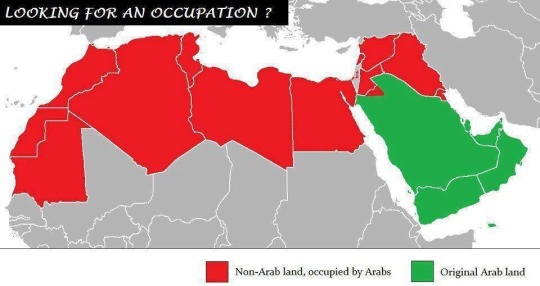
And how this led to Pan-Arabism, the idea that not just the entire Middle East but North Africa and Western Asia are "part of the Arab world," and thus should be under one giant Arab Islamic empire, despite said continents being outside the Arabian peninsula.
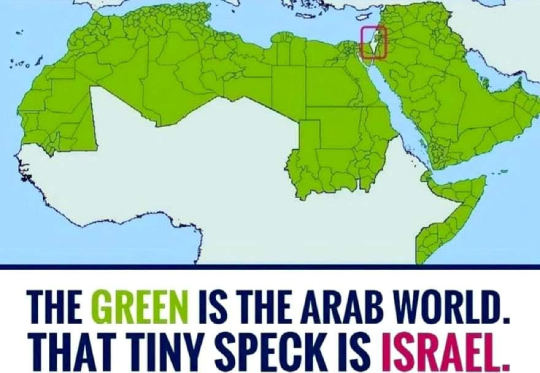
Is that fair to the ethnicities and cultures of people who lived these regions before Arab Islamic conquerors made them part of the Arab world against their will?
So if you're going to hold the West's colonizing history against them, I have some news about Islamic Arab colonizing history...
I believe in religious freedom and freedom of movement for everyone, none of which require colonization, apartheid, expulsion or genocide of another people.
Is now a good time to mention how ethnic and religious minorities were and are treated in Muslim-majority countries? Including Arab Muslim countries?
You've heard of The Pact of Umar, right? The Caliph Umar, who conquered Judea-turned-Syria-Palestina under Islam in the 660's, created a strict set of segregationist or "apartheid" rules for Christians and Jews living in the land he conquered for Islam.
That's not to say that all Muslims or all Islamic nations acted like that. As many a fair-minded historian has said, how much Umar's dhimmi rules were applied or enforced in future Islamic societies depended largely on the Islamic leader, region, and time period.
But I'd argue the Pact of Umar set a precedent for how non-Muslims (particularly Jews) were treated in Muslim majority societies, just like how early chattel slavery laws set a precedent for how African Americans were treated in Southern American states.
Speaking of chattel slavery...
You've heard of the Trans-Saharan "Arab" Slave Trade and how it devastated most of Northern and eastern Africa, and contributed to the Trans-Atlantic slave trade, right?
And how said history of Arabs enslaving ethnic Africans contributed to the current ethnic cleansing of ethnic blacks at the hands of Arab extremists in Sudan today, right?
We would never apply the logic of zionism with any other political minority. This was only allowed to happen because of western interests in the Middle East.
There's so much to unpack here.
First of all: How did the West gain control of the Middle East to begin with? Answer: they won the territories after WWI by defeating the Ottoman Turks, who were themselves colonial powers who controlled the region for centuries, who won said territory from the Malmuk Egyptians. (And so on and so forth.)
youtube
Secondly, you could say that about most small Islamic nation-states created in the 20th century Middle East. While Britain and France both promised to make one unified Arab kingdom after the Arabs helped them defeat the Ottomans in WWI, both Britain and France went back on their word and divvied the land up, creating many small nation-states to serve their own interests.
But they didn't JUST do it with Jews in Israel.
They also created Lebanon, Syria, Jordan, and Iraq.
In the aftermath of World War I and the dismemberment of the Ottoman Empire, France was granted a “mandate” for the Ottomans’ Syrian provinces (other than Palestine). Notionally, France was supposed to oversee those territories’ preparation for future independence, but it treated them much like any other colonial possession. A basic tool of French imperial rule was to patronize certain religious minorities... In certain parts of Syria, for example, France made a point of recruiting Alawites and Druze into its mandate armies. Lebanon and the Maronite constituencies who were the biggest proponents of Lebanese particularism represent another path that religious minorities took to stake a claim in the political landscape of the post-Ottoman Middle East. Rather than a trans-religious pan-Arab or Syrian nationalism, they opted for a national identity rooted much more closely in ethno-religious affiliation. In fact, Lebanon institutionalized religious difference as an official legal status in a particularly notable way. Despite the leading role of its Christian communities, Lebanon was and is highly diverse, with a mixed population of Christians, Sunni and Shiite Muslims, and Druze.
Notice that France created Lebandon specifically to give Christian religious minorities living in the Arab Muslim-majority Middle East a small nation-state of their own--albeit for their own colonial interests.
Rather than honoring the Arab Muslim majority's desire for one big Arab Islamic kingdom (ethnic and religious minorities be damned), one could argue France also applied Western Enlightenment values of "universal rights of self-determination and self-government" (that Hamas appeals to in their 2017 Charter), for some minority religions to have some political self-determination in the Middle, if just the Christian-majority Lebanon and Jewish-majority Israel.
... At least, it was a Christian-majority country. Now it's not, and it was far from a peaceful transition. (I had many Muslim friends in high school and college, and many non-Muslim friends from Muslim-majority countries in the Middle East. This tracks.)
youtube
But anyway, back to the formation of small Arab nation-states.
While the Arabs grumbled about getting many small Arab nation-states rather than one big Arab Islamic kingdom, they were mostly willing to live with it... UNTIL the prospect of a JEWISH nation-state was put on the table. Gee, wonder why?
So again, if you're not picketing Lebanon as being inherently intolerant because it was ostensibly created for an "ethno-religious minority" in the Middle East, but ONLY give Irasel guff for that, then your motives are antisemetic.
Same with the partisan of Pakistan and India by the British.
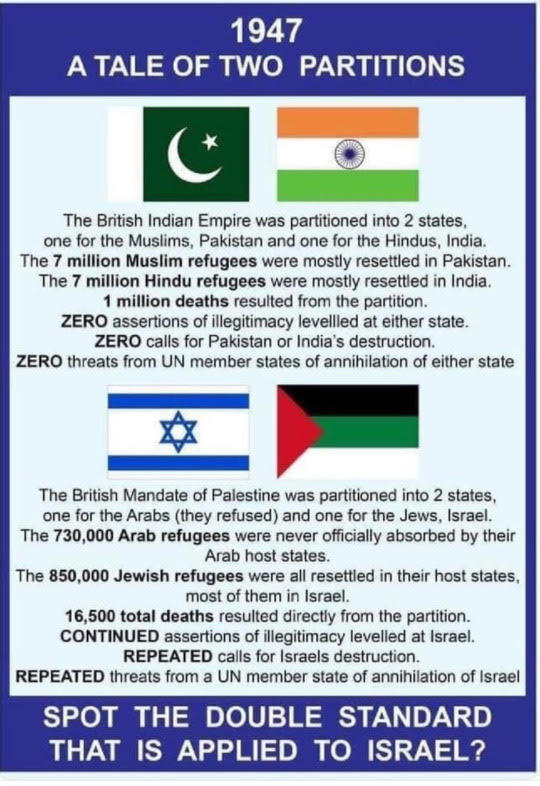
Earnest policies against discrimination start at home, not by sending people in the thousands somewhere else and forcing them to homogenize their cultures and languages.
Again, see Arab Islamic colonial history.
By that logic, most Pan-Arab Islamist movements in the Middle East were and are very selfish for trying to push for only Arab Islamic sovereignty for the Arab Muslim majority--ethnic and religious minorities be hanged.
In fact, I'd argue that by ignoring and blaming all of the Middle East's problems on the "influence of the western" ONLY when it comes to "white Zionists creating Israel," you're basically giving the Arab world the Noble Savage treatment.
I'm going to end with a quote from an article sent to me by a religious studies professor, written by one of his colleagues.
"I have been lucky to survive the Iraq-Iran War, the Lebanese Civil War and many rounds of war between Israel and different Palestinians and Lebanese armed factions.
Wars have repeatedly displaced my family.
We lost one house after another and fled.
We also lost real estate to confiscation and forgery.
Family savings repeatedly lost value due to hyperinflation or got wiped out in various economic collapses and consequent bank bankruptcies.
Each time, we picked up our pieces and silently rebuilt from scratch."
(Note: Mass displacement, home and savings losses still happen very frequently in the middle east to many different people, for different reasons. It happens in many countries that have NO TIES WHATSOEVER to Israel.)
"Ever since I became politically active in college, many decades ago, I have lost family in wars and friends to assassinations.
In 2019, I enjoyed a breakfast meal in Tunis with my two dear friends: Iraqi Hisham Hashimi and Lebanese Lokman Slim.
Pro-Iran militias in Iraq killed Hisham in July 2020.
Hezbollah killed Lokman in February 2021...
Washington [D.C.] relied on the Lebanese judiciary, under the thumb of the Hezbollah assassins themselves, to hold Hezbollah killers of Lokman accountable.
I silently wept.
Each and every one of the miseries my family, friends and I faced was blamed on Israel.
Once we eliminate Israel and liberate Palestine, life will become rosy.
This has been the justification for our bloody world since before my parents were born.
This has been the excuse in the Arab world since I was born.
I refuse to pass this excuse on to my children.
The Palestine nonsense, its victimhood and its liberation, have to end and have to end now."
Antisemitism vs. anti-Zionism: Jewish students are at the forefront of P...
#antisemitism#islamic antisemitism#islamic history#pan-arabism#islamists#islamic supremacy#islamic intolerance#islamic slavery#islamic slave trade#arab slave trade#african slavery#Youtube
16 notes
·
View notes
Text
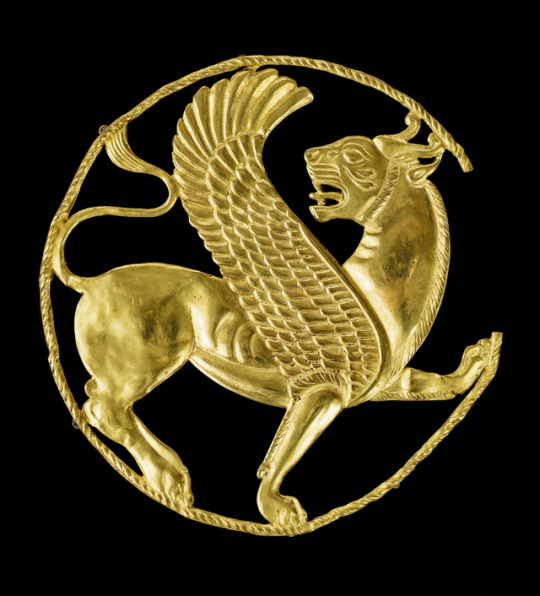
~ Medallion.
Place of origin: Hamadan Province, Western Iran
Period: Achaemenid
Date: 550-330 B.C.
Medium: Gold
487 notes
·
View notes
Text
Hamedani runners turned the champions of Imam Reza (AS) Cup
Hamedani runners turned the champions of Imam Reza (AS) Cup
According to the IRNA correspondent, the Imam Reza (AS) Cup athletics competitions all by the women’s half is also adopted by 33 teams from fully fully fully fully totally fully fully completely different provinces of the nation in Mashhad. These competitions are being held for 2 days on the Imam Reza (AS) monitor and space in 5 disciplines and all by the 5,000-meter strolling self-discipline.…

View On WordPress
#Champions#Cup#General Department of Sports and Youth of Hamadan Province#Hamedan#Hamedani#Imam#Mashhad#Reza#runners#Track and Field
1 note
·
View note
Photo

Hamadan Province, Iran @Babak Taghizadeh
209 notes
·
View notes
Text

Ketubah (Jewish marriage contract) from the Hamadan Province, Iran, 1872
181 notes
·
View notes
Photo
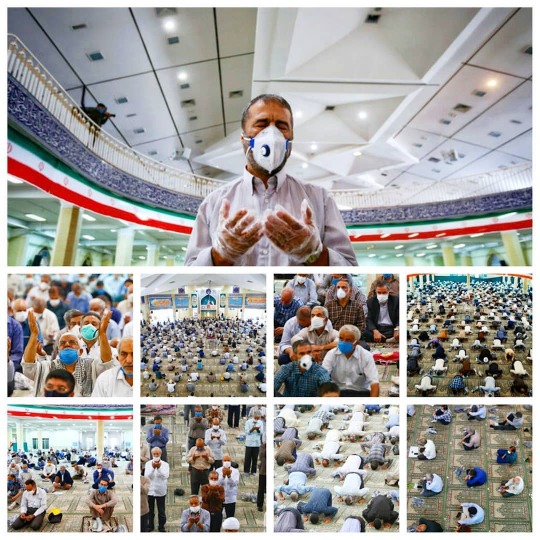
Friday Prayer in Hamedan with health protocols in place The first Friday Prayer ceremony in Hamedan was held on June 26 after a four-month hiatus due to the outbreak of coronavirus. All health protocols were in place during the event. (at Hamadan Province) https://www.instagram.com/p/CB57EBhDK2W/?igshid=k5dwli11epe9
4 notes
·
View notes
Text
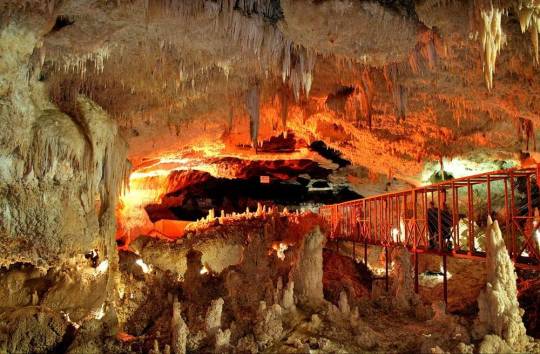


Iran 🇮🇷
Katale Khor Cave
Katale Khor is a cave located in Zanjan Province, Iran. It is situated 120 km south of Zanjan city and is about 410 km from Tehran. The name, Katale Khor, means "mount of the sun". Geological studies in 1984 showed that the cave formation dates back to the Jurassic period. It is believed that the cave is connected to Ali Sadr Cave in Hamadan province. The cave was discovered about 90 years ago.
3 notes
·
View notes
Photo

همیشه بهترین بودی و هستی و خواهی بود. همیشه موفق باشی میلاد جان خیلی میخوامت#رفیق_قدیمی🎖️🎖️🍧🍦 💙💙💙💙💙💙💙💙 @alis.n17.18 @cowboy_m07 #badybulding #esteghlal #love #friend #fitnees #icecream #kpop #moon #رفیق #خاطرات #بستنی (در Hamadan Province) https://www.instagram.com/p/Buje7mAHls9/?utm_source=ig_tumblr_share&igshid=1ejnw11ivexu1
2 notes
·
View notes
Photo

شاری نەهەوەند شارێک بوو لە پارێزگای هەمەدانی مۆدێرن (زۆرینەیان کورد بوون). ٦٥٠ی زایینی هەمەدان یەکەم پایتەختی مادەکان بوو. مێژووی نەخشاندنەکە بۆ ساڵانی ١٨٥٠ دەگەڕێتەوە و شاری نەهەوەند نیشان دەدات. Bajarê Nehavendê bajarekî parêzgeha Hemedanê ya îroyîn bû (piraniya wan Kurd bûn). 650 PZ Hemedan paytexta yekem a Medan bû. Gravûr ji salên 1850'î ye û bajarê Nehavendê nîşan dide. شهر نهاوند در استان همدان امروزی شهری بود (که اکثریت آنها کرد بودند) سال 650 میلادی همدان اولین پایتخت مادها بود. حکاکی مربوط به دهه 1850 است و شهر نهاوند را نشان می دهد. The city of Nahavand was a city in modern Hamadan province (the majority of them were Kurds). 650 AD Hamadan was the first capital of the Medes. The engraving dates from the 1850s and shows the city of Nahavand. كانت مدينة نهاوند مدينة في محافظة همدان الحديثة (غالبيتهم من الأكراد). 650 م همدان كانت أول عاصمة الميديين. يعود تاريخ النقش إلى خمسينيات القرن التاسع عشر ويظهر مدينة نهاوند. Günümüz Hemedan eyaletine bağlı Nihavend şehri M.S 650'de Kürtlerin yoğun (Büyük çoğunluk Kürt idi) olarak yaşadığı şehirdi. Hemedan, Medlerin ilk başkentiydi. Gravür 1850'lere ait ve Nihavend şehrini gösteriyor. لطفا صفحه ما را فالو کنید و به دوستان خود معرفی کنید✌✌ @Diroka_korda Lütfen sayfamızı takip edin Ve arkadaşlarınla tanıştır ✌✌✌ @Diroka_korda #diroka_korda #Wêne #wênefîlm #cıwanhaco #kurdistan #qamişlo #kobane #ypg #ypj #bakur #azadi #ahmedkaya #rojbaş #amed #mehebad #adnandilbrin #aysa_șan #kurd #kurdo #kobani #afri̇n #sine #evarbaş #şakiro #wênefilm #demirtaş #hdp #saverojava @kawaurmiye_ @hozan__diyar @hunersam @seydaperincek.official @denizdeman_ @hozanaydinofficial @azadbedran @mala.dengbejan @kordmusic @mehmetyildirim.official @komaserhat @kemaleamed21 @Mohammadkhani_official @yaserahmadi292 @serhatcarnewa @tishk_tv @tirej_urmiye_official @_.dirok @dijwarelbanofficial @keskesor_muzik @dengbej_tv_welat @hemid_urmiye_officiall @denge_kurmanci_official @urmiye_muzik_ @evina.kordi @zinarsozdar.official @mesut https://www.instagram.com/p/CibzizLjLHo/?igshid=NGJjMDIxMWI=
#diroka_korda#wêne#wênefîlm#cıwanhaco#kurdistan#qamişlo#kobane#ypg#ypj#bakur#azadi#ahmedkaya#rojbaş#amed#mehebad#adnandilbrin#aysa_șan#kurd#kurdo#kobani#afri̇n#sine#evarbaş#şakiro#wênefilm#demirtaş#hdp#saverojava
0 notes